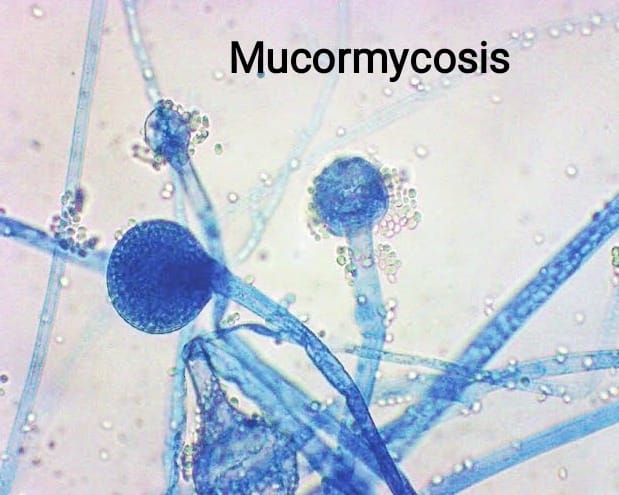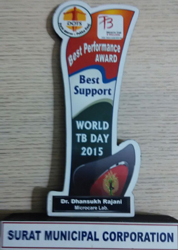Email: microcaresurat@gmail.com
microcaresurat@yahoo.co.in
Call Us: 0261-2450049
Traditionally, the term “Black Fungus” is used for Phaeoid (dematiaceous) fungi in medical microbiology due to its brownish black color on a KOH mount under the microscope. In fact, the term “Phaeoid” literally means “dark” as these fungi contain melanin.
Thus, mucormycosis isn’t really the “black fungus”, however, it does give black color on the area where it grows, leading to this misunderstanding. The black color here isn’t from the fungus itself, but from the dead “necrotic” tissue as a result of the fungal infection.
Mucor is a fungus commonly found in plants, soil, decaying fruits and vegetables. It is also found in air and dirt and may even be found in the nose and mouth of healthy individuals, without causing any infection.
Mucor usually enters the body through inhalation while breathing, ingestion from mouth or injection through skin. It can affect any part of the body, and the disease caused in the human body due mucor is called “mucormycosis”.

Mucor has been known to cause disease in humans since 1855.
Mucormycosis is the term given to the infection and disease caused by mucor in humans.
It is an “opportunistic infection”, that is, it typically affects people with a weak immune system like patients of HIV/AIDS, diabetes, cancer, long standing steroid therapy, etc…
Healthy individuals may unknowingly harbor the fungus on their body without actually suffering from the disease.
Mucor is notorious for entering the blood vessels (also called angio-invasive) and rapidly destroying body tissues. Thus, mucormycosis becomes a medical emergency.
COVID-19 & Rise of Mucormycosis
COVID-19 makes a particularly suitable environment for mucor to cause disease through the following three ways:
1. Steroids are used in COVID-19 treatment to tackle the “cytokine storm” which is basically our immune system in overdrive. Steroid treatment help by suppressing the immune system, in turn allowin




